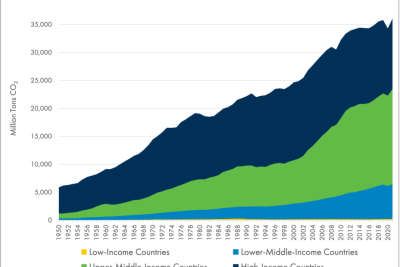
EO Wilson: Defining Biodiversity and Key Facts Explained

Biodiversity, a term often associated with EO Wilson biodiversity, represents the astonishing variety of life forms on our planet. This rich tapestry of life encompasses thousands of species, intricate ecosystems, and genetic variations within those species, making it a critical area of study and conservation. Understanding biodiversity is fundamental to grasping how ecosystems function and the myriad ways in which they support life, including human life. Emphasized by the work of scientists like EO Wilson, the importance of biodiversity is multi-faceted, impacting ecological stability, agriculture, and even the arts and culture.
Throughout history, biodiversity has been threatened by an array of factors including urbanization, deforestation, climate change, and pollution. Today, the stakes are higher than ever. Experts estimate that we are on the brink of a mass extinction event driven by human activities, with potentially one million species facing extinction within decades. In light of **EO Wilson biodiversity** studies, it is imperative to understand the principles underlying biodiversity, its measurement, and the urgent need for conservation efforts. This article delves into defining biodiversity, the importance of its preservation, and the strategies to measure and protect it.
- Understanding Biodiversity: Definition and Importance
- Measuring Biodiversity: Species Richness and Beyond
- Types of Biodiversity: Genetic, Ecosystem, and Endemic Species
- The Current Biodiversity Crisis: Extinction Threats Explained
- Regional Variations in Biodiversity: From Tropical Forests to Unique Habitats
- The Ecological Significance of Biodiversity: Health and Resilience
- Technical Terms in Biodiversity: A Complex Web of Life
- Conclusion: The Imperative of Preserving Biodiversity
- References and Further Reading
Understanding Biodiversity: Definition and Importance
Biodiversity refers to the variety of life on Earth and includes the diversity of species, the genetic variations among them, and the ecosystems they form. The concept is essential not just for ecological balance, but for human well-being. Diverse ecosystems provide vital services, such as clean air and water, pollination of crops, and disease regulation. As EO Wilson emphasized, maintaining this variety of life is crucial because each species plays a specific role in its habitat, contributing to the overall health and resilience of the ecosystem.
The importance of biodiversity extends beyond ecological benefits. It also has profound implications for economic sustainability and cultural identity. Regions rich in biodiversity often attract tourism, which can bolster local economies and support conservation efforts. Moreover, many cultures around the world rely on local biodiversity for their traditional practices and ways of life. Therefore, safeguarding biodiversity is not only an environmental imperative but also a social and economic necessity.
Measuring Biodiversity: Species Richness and Beyond
One of the primary methods of assessing biodiversity is through species richness, which refers to the number of different species present in a given area. This metric provides a lens through which scientists can compare the biodiversity of different regions. However, measuring biodiversity accurately requires a more layered approach that looks beyond species counts. Scientists also consider relative abundance of species in addition to the variety, which offers a clearer picture of ecosystem health and stability.
Another essential aspect of measuring biodiversity involves analyzing genetic diversity within species. Genetic variation is critical for the adaptability of species in the face of environmental changes, disease, and other threats. The loss of genetic diversity can lead to reduced resilience among populations, making them more susceptible to extinction. Therefore, effective conservation strategies must incorporate methods to maintain and enhance genetic diversity as well as species richness.
Types of Biodiversity: Genetic, Ecosystem, and Endemic Species
Biodiversity can be categorized into three main types: genetic diversity, species diversity, and ecosystem diversity. Genetic diversity refers to the variety of genes within a particular species. This type of diversity is essential for the survival of species, as it enables populations to adapt to changing environments over time. Conversely, species diversity encompasses the variety of species found in a given ecosystem, including both well-known organisms and those that are less familiar.
Ecosystem diversity refers to the variety of ecosystems that exist within a specific geographic area. Different ecosystems, such as forests, wetlands, grasslands, and oceans, each support distinct types of species and ecological processes. The interaction between these ecosystems fosters resilience and helps regulate environmental conditions. Additionally, endemic species are those unique to a specific location, often found nowhere else in the world. These species are crucial indicators of the health of the ecosystems they inhabit, and they are particularly vulnerable to extinction threats.
The Current Biodiversity Crisis: Extinction Threats Explained
The current state of global biodiversity is alarming. A 2019 report from the Intergovernmental Science-Policy Platform on Biodiversity and Ecosystem Services (IPBES) underscored the impending threat of extinction facing up to one million species due, primarily, to human activities like habitat destruction, climate change, pollution, and overexploitation. This crisis is closely tied to EO Wilson's biodiversity principles, illustrating how our actions can have devastating effects on the natural world.
The factors contributing to this biodiversity crisis are multifaceted. Habitat loss remains a primary driver, as urban sprawl and agricultural expansion reduce the land available for wildlife. Climate change introduces additional stressors that threaten existing habitats, alter migration patterns, and exacerbate competition for resources. Furthermore, pollution from plastics, chemicals, and heavy metals poses direct threats to wildlife, while overfishing and poaching significantly diminish species populations worldwide.
Regional Variations in Biodiversity: From Tropical Forests to Unique Habitats
Biodiversity is not evenly distributed across the globe. Certain regions, particularly tropical forests, exhibit exceptionally high levels of species richness and biodiversity. The Amazon rainforest alone is home to around 10% of all known species on Earth. In contrast, specific habitats like high-altitude mountains, deserts, and deep-sea environments may host uniquely adapted species that are sometimes endemic to those regions. Understanding the geographical variations in biodiversity is crucial for effective conservation planning.
Moreover, unique habitats such as coral reefs and rainforest ecosystems serve critical ecological functions while supporting a vast array of life forms. These regions often act as hotspots for biodiversity, creating essential conditions for species survival and thriving. Protecting these habitats is essential not only for the species that inhabit them but also for the services they provide to the planet, including carbon storage, oxygen production, and water filtration.
The Ecological Significance of Biodiversity: Health and Resilience
The ecological significance of biodiversity extends beyond mere species counts. The diversity within ecosystems contributes significantly to their overall health and resilience. Systems rich in biodiversity are typically more robust, able to withstand environmental stressors such as climate fluctuation, pathogens, and human disturbances. Research has shown that diverse ecosystems are better equipped to respond to changes—whether those changes are natural occurrences or the results of human actions.
Maintaining biodiversity is crucial for fostering the resilience of ecosystems, ensuring that they can provide vital services such as soil fertility, water purification, and climate regulation. As EO Wilson pointed out, preserving biodiversity is pivotal for the health of the planet and humanity’s future. This relationship emphasizes the pressing need for effective conservation strategies that prioritize the safeguarding of biodiversity as part of broader environmental efforts.
Technical Terms in Biodiversity: A Complex Web of Life
To navigate the intricate world of biodiversity, understanding specific technical terms and concepts is essential. Terms such as population dynamics, ecosystem services, and trophic levels provide a framework for examining how different species interact and function within ecosystems. Population dynamics refer to the patterns of growth and decline in species populations, while ecosystem services encompass the various benefits that humans derive from functioning ecosystems, including food, clean water, and climate stabilization.
The concept of trophic levels is also vital for understanding biodiversity. These levels describe the hierarchical positions organisms occupy within food chains, from primary producers (like plants) at the bottom to apex predators at the top. Each link in the food web is interdependent, underscoring the complexity and interconnectedness of life on Earth. Grasping these terms heightens our understanding of biodiversity's significance and our role in preserving it.
Conclusion: The Imperative of Preserving Biodiversity
In conclusion, the necessity of preserving biodiversity is more critical than ever. As highlighted by the work of scientists like EO Wilson, the loss of biodiversity threatens not only species themselves but the ecological integrity of our planet. Understanding biodiversity—including its diversity, challenges, and the intrinsic value of every life form—empowers individuals and communities to take action towards more sustainable living practices, conservation efforts, and policymaking.
It is essential to recognize that biodiversity is not merely a scientific concern but an ethical imperative. The interconnectedness of life on Earth means that our actions today will significantly impact future generations. From grassroots initiatives to global conservation efforts, collective action is needed to safeguard the rich variety of life on our planet. Ultimately, preserving biodiversity is fundamental to ensuring a vibrant, resilient world where life can flourish for generations to come.
References and Further Reading
- ABC: The Importance of Biodiversity
- DEF: Conservation Strategies for Biodiversity
- XYZ: Understanding Ecosystem Services
- IPBES: Global Biodiversity Assessment Report
Did you find this article helpful? EO Wilson: Defining Biodiversity and Key Facts Explained See more here Education.
Leave a Reply






Related posts